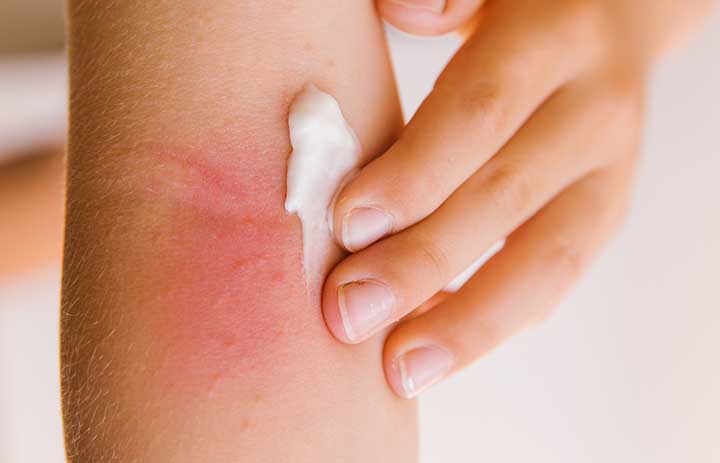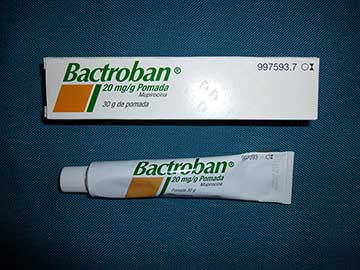Table of Contents
Mupirocin Pharmacological Overview
Pseudomonas fluorescens produces mupirocin (pseudomonic acid), a natural substance. After absorption, it is rapidly inactivated, and systemic levels are impossible to detect. It comes in the form of an ointment that can be applied topically.
Why Mupirocin Prescribed
Mupirocin is an antibiotic that is used to treat impetigo and other bacterial skin infections.
It doesn’t work against fungal or viral infections.
But sometimes, this drug is prescribed for various medical conditions.

How to Use Mupirocin Ointment
Before you start using mupirocin, and each time you get a refill, read the Patient Information Leaflet if one is available from your pharmacist. Inquire with your doctor if you have any concerns.
This medicine can only be used on the skin. Second, clean and dry the affected area. Then, as instructed by your doctor, apply a small amount of ointment to the affected area three times a day. A bandage may be used to cover the treated area.

To get the most satisfaction from this drug, take it on a daily basis. Even if your symptoms go away after a few days, keep taking it for the full time recommended. Stopping the medication too soon can cause the infection to return.
Unless otherwise instructed by your doctor, do not use this drug near your eyes, nose, or mouth, or on large areas of damaged or broken skin. If you get it in your eyes, nose, or mouth by mistake, clean thoroughly with plenty of water.
Read Drysol – Excessive sweating solution
Precautions(Contraindications)
Tell your doctor if you are sensitive to mupirocin or if you have any particular concerns before using it. Inactive ingredients (such as polyethylene glycol, which is used in some brands) can cause allergic reactions or other conditions. For more details, consult your physician.
Tell your doctor about your medical history before taking this drug, particularly if you have kidney disease (if you are using a brand of mupirocin that contains polyethylene glycol).
Tell your doctor or dentist of all the things you use before surgery (including prescription drugs, nonprescription drugs, and herbal products).
This drug should only be taken during pregnancy if absolutely necessary. Consult your doctor about the risks and benefits.
It is unclear whether or not this medication moves into breast milk. Before you start breastfeeding, talk to your doctor.

Possible Side Effects
Keep in mind that your doctor recommended this drug because he or she believes the value to you outweighs the risk of side effects. The majority of people who take this drug do not experience any significant side effects.
Mild burning or stinging may occur after using this drug, but this is uncommon. Avoid using this drug and inform your doctor right away if you experience intense burning, stinging, or discomfort.
Due to a form of resistant bacteria, this drug may sometimes cause a serious intestinal disorder called Clostridium difficile-associated diarrhea. This condition may develop during treatment or weeks or months after it has ended. If you have persistent diarrhea, abdominal or stomach pain/cramping, or blood/mucus in your feces, call your doctor right away.
If you have any of these symptoms, avoid taking anti-diarrhea or opioid drugs because they can exacerbate them.
Usage of this drug for an extended period of time or on a regular basis may result in a new fungus or yeast infection on the skin. If you see symptoms of a new infection, or if your existing infection does not improve or worsens, call your doctor right away.
This medication rarely causes a severe allergic reaction. However, if you have any signs of a serious allergic reaction, such as a rash, itching/swelling (especially of the face/tongue/throat), extreme dizziness, or difficulty breathing, seek medical attention right away.
This isn’t an exhaustive compilation of potential side effects. Consult the doctor if you experience any other side effects not listed above.
You can report side effects to FDA in the USA – 1-800-FDA-1088 or at www.fda.gov/medwatch.
Read Methenamine
Dosage
This medicine’s dosage can vary depending on the patient. Follow the doctor’s advice and the label’s instructions. Only the average doses of this medication are included in the following detail. If the dosage differs, do not alter it until your doctor instructs you to.
The amount of medication you take is determined by the medicine’s potency. In addition, the number of doses you take per day, the interval between doses, and the period of time you take the drug are all determined by the medical condition for which the medicine is being used.
For topical application (cream)
For the treatment of infected traumatic skin lesions that have spread to other parts of the body:
Apply three times a day for ten days to adults and children aged three months and up.
Use and dosage for children under the age of three months must be decided by your doctor.
Topical (ointment) dosage form
Treatment for impetigo is as follows:
Apply three times a day to adults and children 2 months and older.
Use and dosage for children under the age of two months must be decided by your doctor.

Overdose and Missed Dose
If this medication is swallowed, it can cause serious damage. Call 911 if someone has overdosed and is experiencing severe symptoms such as passing out or having trouble breathing. Otherwise, contact a poison control center as soon as possible.
If you forget to take a dose, take it as soon as possible. If the next dose is approaching, skip the skipped dose. Use the next dose at the same time every day. To catch up, do not double the dose.
Drug Interaction
Drug interactions can cause your drugs to function differently or put you at risk for severe side effects. This list does not include all potential drug interactions. Make a list of all you consume (including prescription and otc medications, as well as herbal remedies) and discuss it with your doctor. Without your doctor’s permission, do not begin, stop, or alter the dosage of any medications.
Storage and Disposal
Keep this drug securely closed in the bottle it came in and out of the reach of children. It should be held at room temperature, free from humid air (not in the bathroom).
Since certain packages (such as weekly pill minders and those for eye drops, creams, patches, and inhalers) are not child-resistant and young children can easily open them, it is important to keep all medicine out of sight and reach of children. To keep young children safe from poisoning, always lock the safety caps and store the drug in a secure position that is out of their sight and reach.
Unused drugs should be disposed of in a specific manner to prevent pets, infants, and others from ingesting them. You should not, however, flush this drug down the toilet. Instead, a prescription take-back service is a perfect way to get rid of your drugs.
Brand Names of Mupirocin
- Bactroban®
- Bactroban® Nasal
- Centany® Nasal

Pharmacology
Mupirocin is effective against gram-positive bacteria, including methicillin-susceptible and resistant Staphylococcus aureus strains. Mupirocin inhibits the isoleucyl tRNA synthetase enzyme in staphylococci. Low-level resistance is caused by a point mutation in the target enzyme’s gene, with a minimum inhibitory concentration (MIC) of up to 100 mcg/mL. There has been a lot of talk about low-level resistance.

after a long period of use Local concentrations obtained with topical treatment, on the other hand, are well above this MIC, and clinical failure is not caused by this degree of resistance. The existence of a second isoleucyl tRNA synthetase gene, which is plasmid-encoded, causes high-level resistance with MICs exceeding 1000 mcg/mL. Resistance at a high level causes a complete lack of function. Hospital-associated outbreaks of staphylococcal infection and colonization have been linked to strains with high levels of resistance. Despite the fact that extensive use of mupirocin leads to higher rates of resistance, most staphylococcal isolates remain susceptible.
Mupirocin is a topical antibiotic used to treat mild skin infections including impetigo. Topical application over large contaminated areas, such as decubitus ulcers or open surgical wounds, is a major contributor to the development of mupirocin-resistant strains and should be avoided. Mupirocin reduces S aureus nasal carriage in patients and health care workers for a short time, but findings on its ability to avoid subsequent staphylococcal infection are mixed.
Mupirocin Summery
Mupirocin topical cream is used to treat secondary infections caused by particular bacteria in traumatic skin lesions. Impetigo is treated with mupirocin topical ointment. This medication works by either destroying or stopping bacteria from growing.
This medication can only be obtained with a doctor’s prescription.
Last Updated on February 23, 2022 by Learn From Doctor Team





